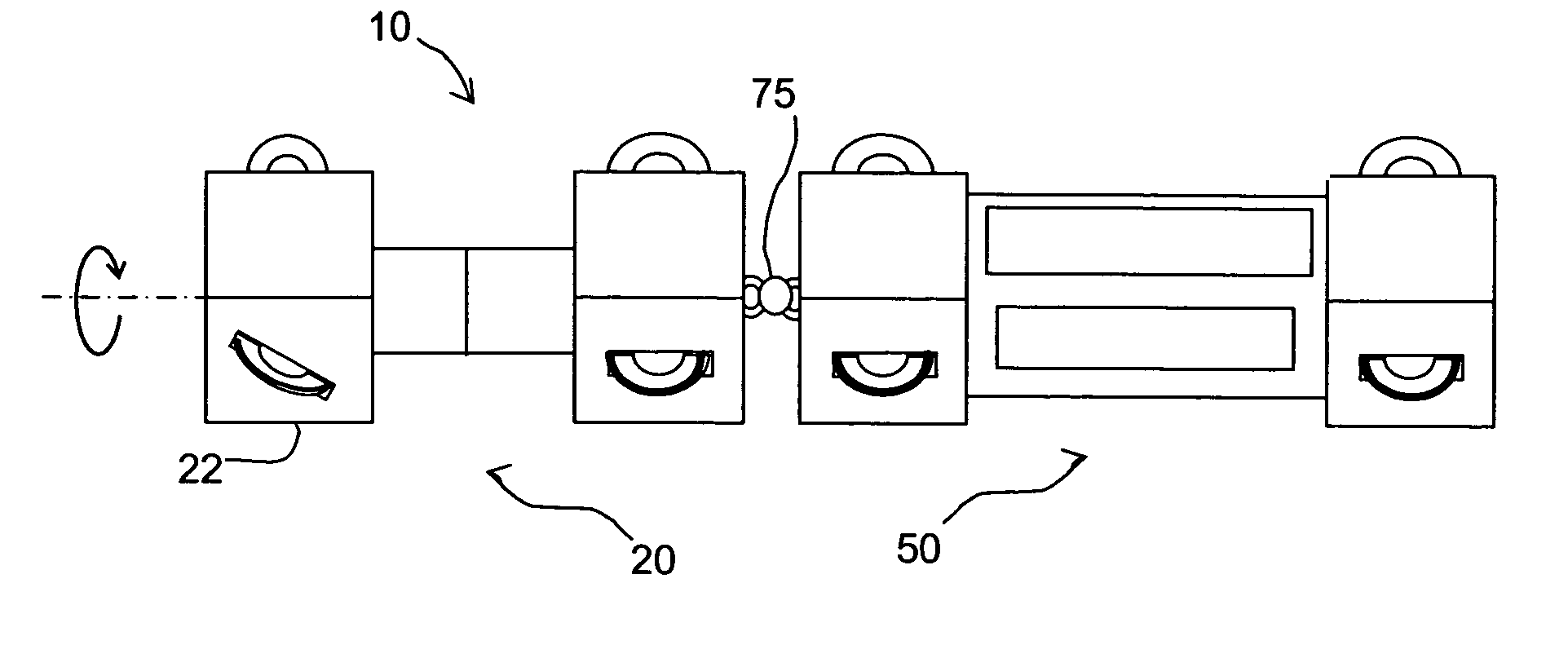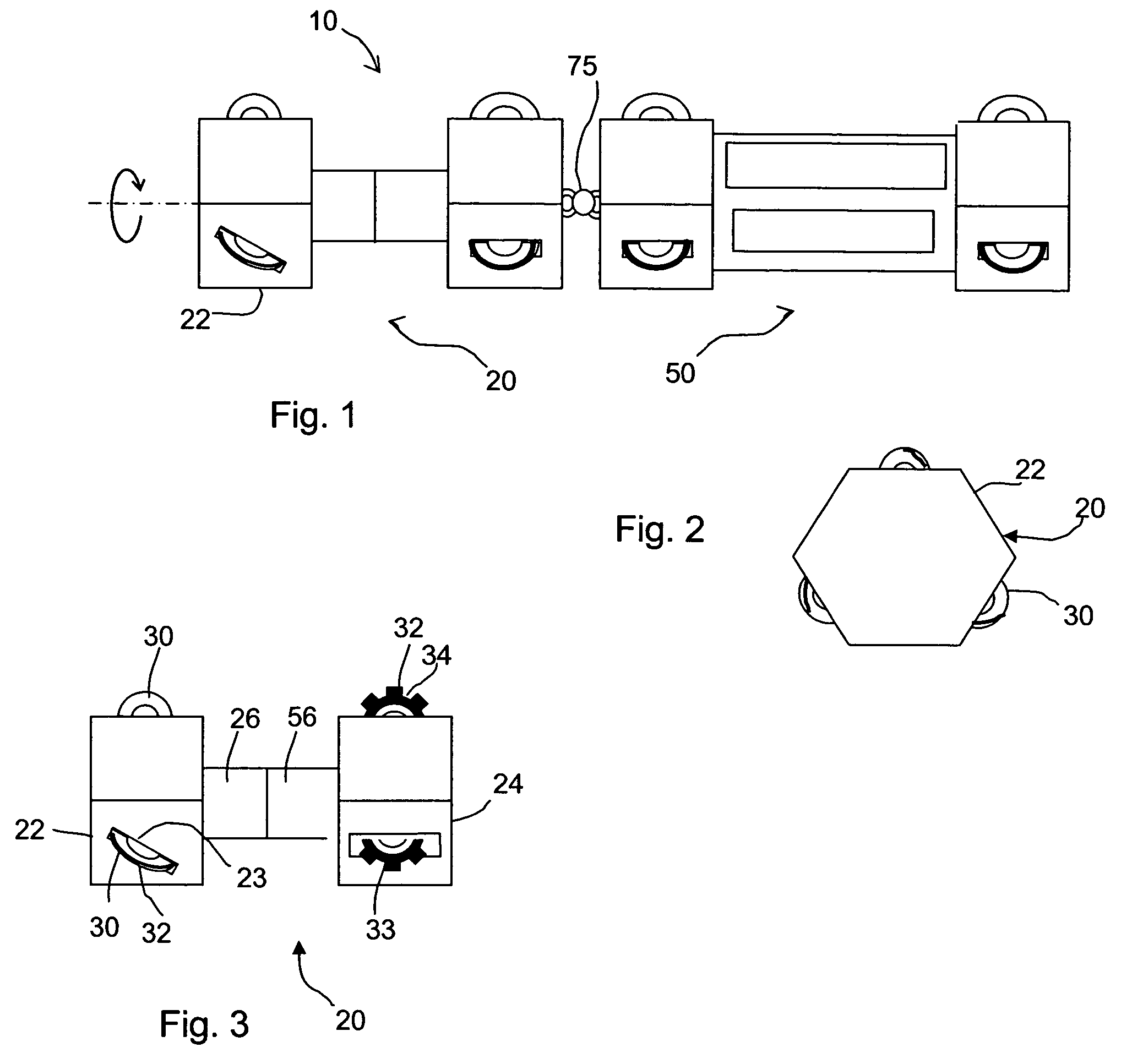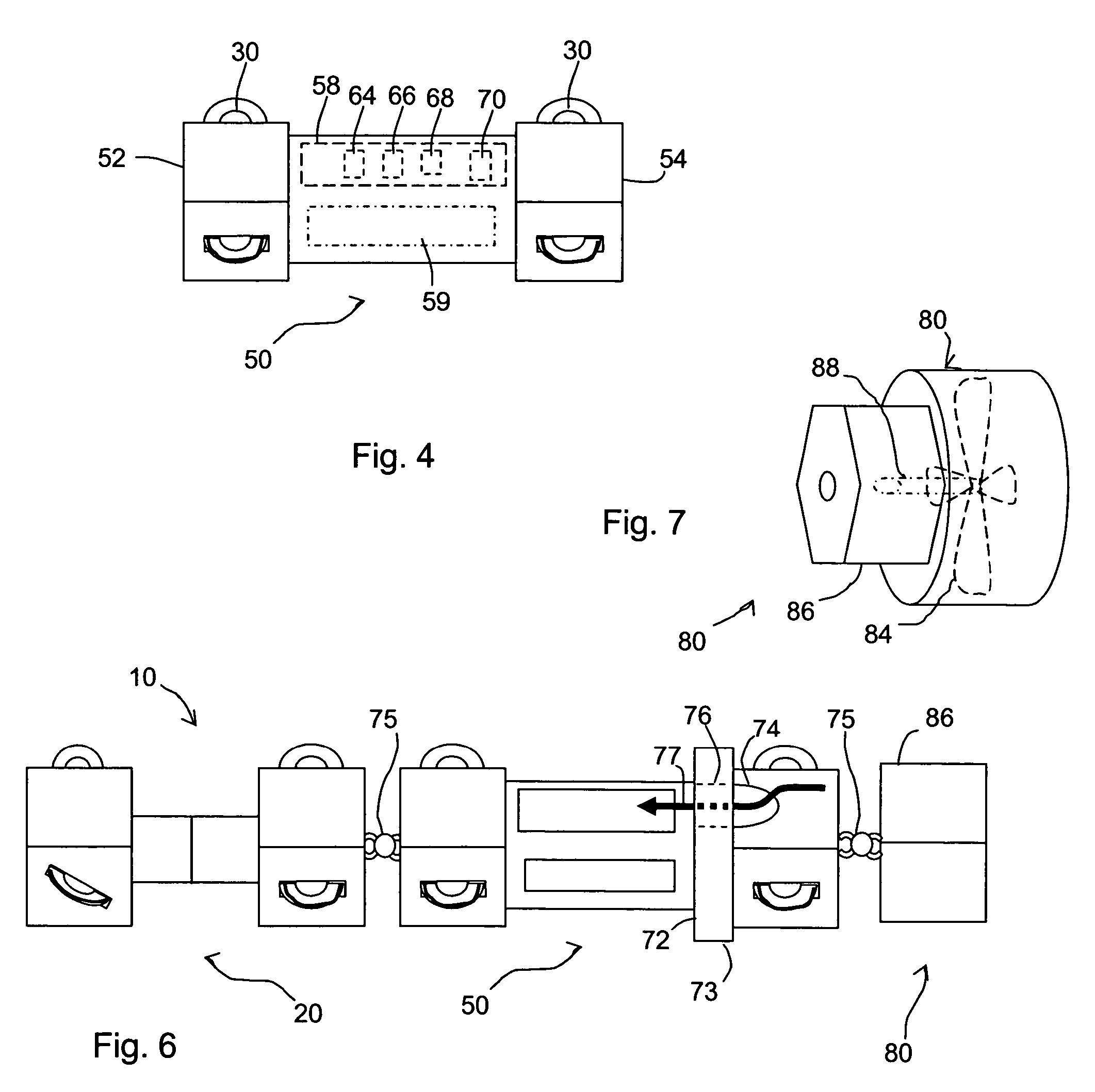Autonomous robotic crawler for in-pipe inspection
a robotic crawler and crawler technology, applied in the field of robotic equipment, can solve the problems of small air cylinders that do not have the capacity to generate enough pushing force directly against miniature air cylinders, and few advances in the design of crawling apparatuses having adequate motive forces
- Summary
- Abstract
- Description
- Claims
- Application Information
AI Technical Summary
Benefits of technology
Problems solved by technology
Method used
Image
Examples
Embodiment Construction
[0028]In order to fully describe the embodiments of the present invention, reference will be made throughout this description to a longitudinal axis. The longitudinal axis is parallel to the axis of symmetry of the conduit or pipe through which the robot is traveling. It should be appreciated that the scope of the invention is only limited by the claims and not by this description.
[0029]Referring initially to FIGS. 1 and 2, the present invention provides a pipe-crawling robot 10. Robot 10 generally consists of at least two independently modular, articulated segments: first segment 20 and second segment 50. First segment 20 is preferably connected to second segment 50 by a flexible coupling 75. Flexible coupling 75 is free to bend about the longitudinal axis of robot 10, but prevents the relative rotation about the longitudinal axis. The combination of first segment 20 and second segment 50 provide the locomotive motion of robot 10, as will be described below in detail.
[0030]Referrin...
PUM
 Login to View More
Login to View More Abstract
Description
Claims
Application Information
 Login to View More
Login to View More - R&D
- Intellectual Property
- Life Sciences
- Materials
- Tech Scout
- Unparalleled Data Quality
- Higher Quality Content
- 60% Fewer Hallucinations
Browse by: Latest US Patents, China's latest patents, Technical Efficacy Thesaurus, Application Domain, Technology Topic, Popular Technical Reports.
© 2025 PatSnap. All rights reserved.Legal|Privacy policy|Modern Slavery Act Transparency Statement|Sitemap|About US| Contact US: help@patsnap.com



